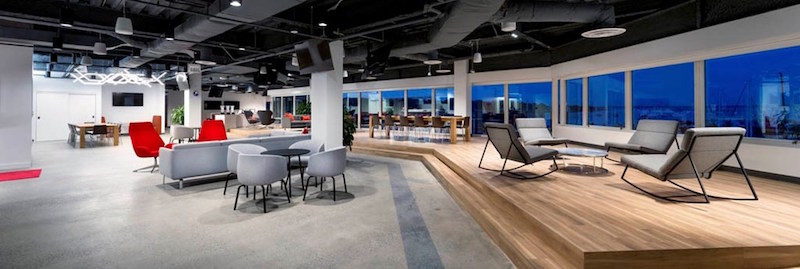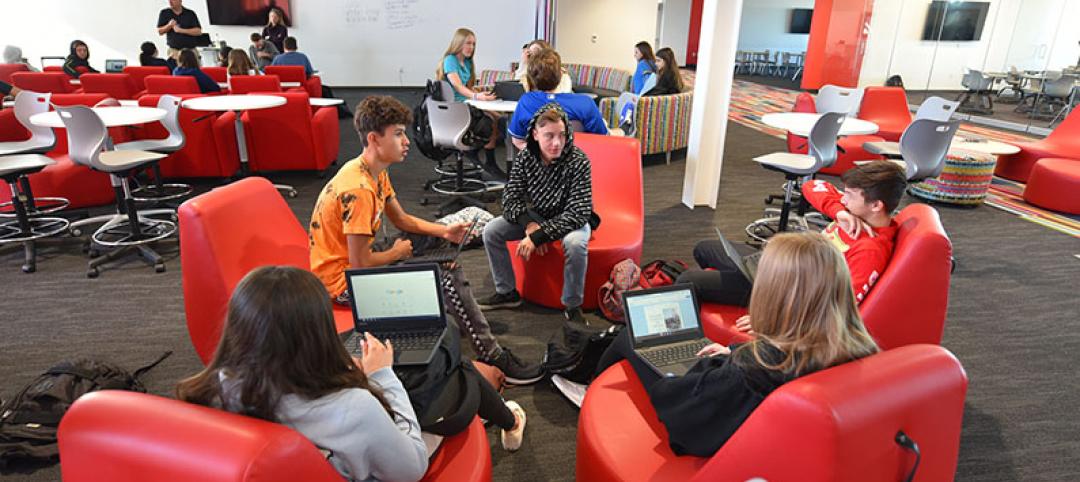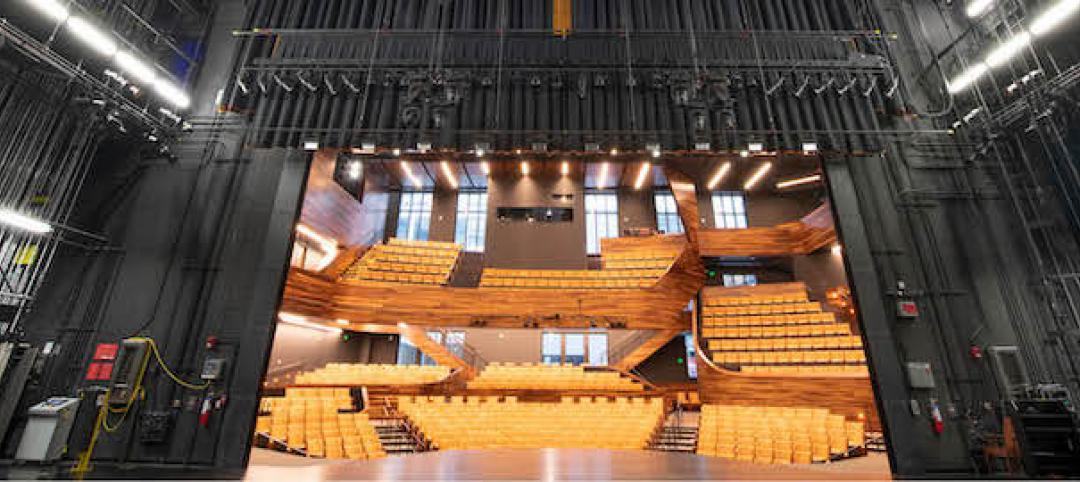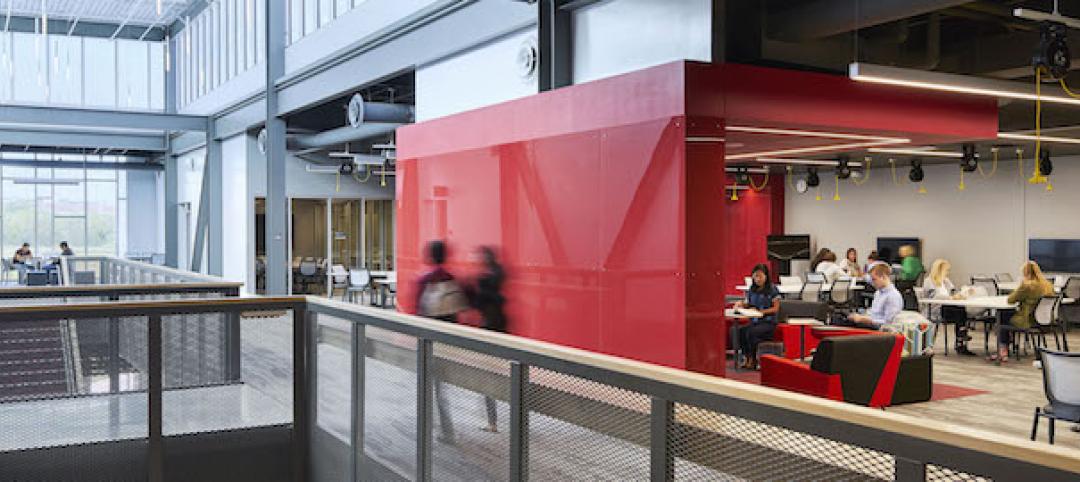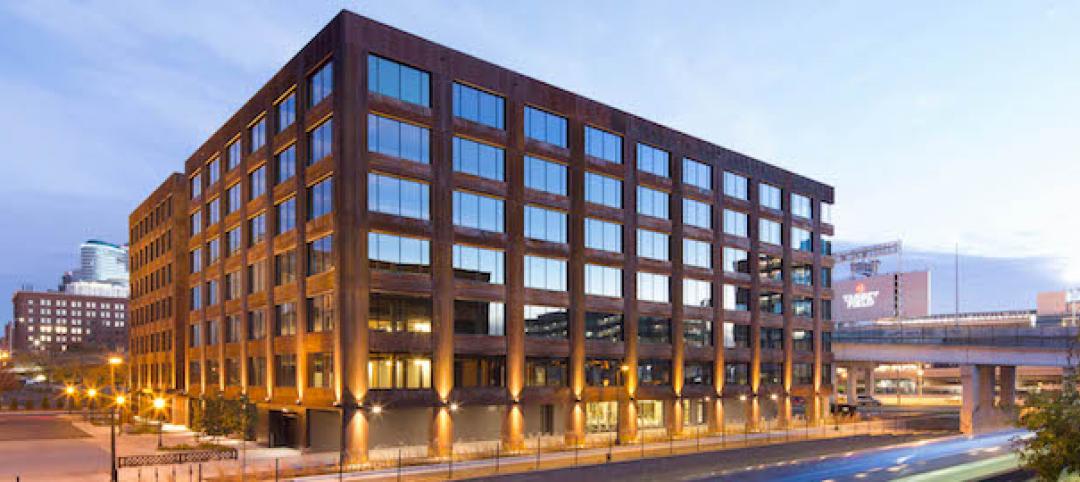Open office design draws mixed reviews these days, and noise is one of the primary reasons. Spaces intended to facilitate the free flow of people and ideas often allow noisy distractions to travel, too. But thoughtful design, paired with a change management program to educate staff, can both enhance connectivity and minimize distractions.
So how do we deliver workplaces that support our clients' goals for branding, functionality, and productivity? What DLR Group workplace strategist Gretchen Wahab, acoustician Anat Grant, and myself discuss below is DLR Group's multi-pronged approach that takes equal advantage of expertise in acoustics, office culture, communication, and design.
AZ: Distractions at work have been linked to drops in performance as high as 66%. Let's talk about the first step in finding a comfortable sound environment for any office.
Gretchen Wahab: Every organization is unique, so understanding its culture and work process is critical. A law firm where people are holding confidential conversations has different acoustical needs than an advertising agency where people are openly bouncing ideas off each other. Other businesses benefit from a blended environment to support various groups with diverse responsibilities--vibrant, open areas where ideas travel fast, and quiet spaces for those who require deep, individual focus or handle sensitive subject matter.
AZ: How do you uncover that culture, or that balance of needs?
GW: It all begins with discovery. Whenever we start a new project, we actively engage with a cross section of the types of people who will be working in the space to learn what kind of environment enables them to do their best work. Proprietary tools we've developed in-house, such as multi-dimensional surveys, identify teams that want a happy hum to embody the energy of their brand, and teams that are looking to convey a more conservative atmosphere. In this extensive discovery process, we often find multiple team personas within a single organization. We often recommend an activity-based layout for just this reason.
AZ: So we know that a deep cultural understanding is key to driving the right plan for an organization. We can right-size the number of focus rooms, tailor collaborative areas, and create new blended spaces like work cafés that support social connections, and serve as alternative space for individual work. How does our acoustical expertise bring even more value to all of those types of spaces?
Anat Grant: For years, the well-accepted acoustical strategy for any type of workplace was known as ABC: absorb, block, and cover—which means to add sound-absorbing materials, block sound with partitions and cubicle walls, and cover distracting noise disturbances with background masking sound. However, this one-size-fits-all approach is not optimal for our clients. These are still relevant strategies, but design language has changed: Walled cubicles have been replaced with desking areas, and acoustical ceiling tiles (ACT) are employed less often. So, our acoustical solutions in the integrated design process are less formulaic, and more customized.
We minimize noise in certain parts of an office by creating different neighborhoods and locating inherently louder functional spaces together and away from quiet places for deep concentration. We can also minimize distractions by varying high tables with lower work stations. The change in height creates cultural cues not to shout across the room.
Where ACT is not incorporated, exposed-structure ceilings still require acoustical treatments to reduce noise buildup; these range from spray-applied material to hanging baffles, or suspended clouds with integrated lighting. In some layouts there are opportunities to add acoustical wall panels that complement the design aesthetic. Even green walls can provide a modest amount of sound absorption.
AZ: Can a space be too quiet?
AG: Absolutely. Studies have shown that it’s just as hard to concentrate in an office that’s too quiet as one that’s too noisy. Often when people complain about noise interfering with their productivity, what they’re really talking about are distractions. Without any background noise, individual voices and other sounds become even more noticeable and travel farther, creating a larger distraction area. When steady background sound is added to an open plan layout, conversations do not carry as far, and the distraction distance shrinks.
In older buildings, constant-volume HVAC systems provided a dull hum throughout the day. However, today's energy-efficient systems tend to be quieter. To compensate, sound masking systems are now a common choice to add background noise in open plan areas. Some systems utilize microphones, occupancy sensors and algorithms to adapt the masking sound to the number of people in the office and their actual noise levels. Other systems can even replicate natural, energizing sounds like birds chirping or the ocean lapping against the shore.
AZ: What about private spaces?
AG: These generally have low background noise levels, and are designed to support their specific functions. For example, in conference and huddle rooms with audiovisual technology, acoustical finishes must be coordinated with microphone and speaker systems and locations. Partitions, swing doors, and sliding doors must provide appropriate levels of speech privacy and control noise transfer to adjacent spaces. Sound masking in corridors and circulation can also help increase speech privacy in closed rooms.
AZ:Let’s talk about the financial part of this equation. We know from a number of studies that noise is the main concern in open office environments. Yet acoustical treatments and technology are often the first item to be cut when client aspirations exceed their budgets. Investment in acoustics may not be tangible in the space at move-in, but it’s one of the most critical elements for the long-term viability of any space.
For most firms, people are their most valuable assets, so supporting employee comfort and productivity is inextricably linked to engagement and satisfaction levels.
AG: Acoustical comfort—or discomfort—has a direct impact on a company’s bottom line. A recent report by Jones Lang LaSalle found that improving an office’s acoustics translated into a 6% increase in productivity. Yet the user survey data from award-winning green buildings consistently shows that acoustics has low occupant satisfaction.
As mentioned in GSA Sound Matters, it’s important to consider acoustics within the larger holistic view of the workspace. Acoustics are often overlooked in an overall strategy of designing a space where people feel good and are able to perform. Such strategies also include daylight, temperature, and other systems that create a supportive environment. Our studies consistently show that choice and control are essential to retaining the 30% of the workforce that gives more than they get.
AZ: Change management is another critical component of an acoustically successful office. When a company moves into its new workspace, how can we educate user groups on the best ways to take advantage of all the noise reduction strategies we put into our design?
GW: In the choice-based workplace, the most important acoustics tools are often an employee’s own two feet. No space will be perfect for every person at every time of day so our designs need to make it effortless to move between spaces. Many of us are creatures of habit and are often accustomed to having our individual work area be home-base for the day. With this in mind, it's critical staff feels empowered to utilize the entire office while promoting active management and leadership that supports a more dynamic, ever-shifting environment. Based on recent post-occupancy surveys, we've uncovered an interesting and repeated theme: While choice and control are very important to employees, they don't necessarily take advantage of this new capability. As an example, 77% of employees at a brand marketing firm that just moved into their new headquarters space believed it was important to have choice over where to work, and 84% reported improved choice in the new work environment. However only 55% reported taking advantage of this opportunity. Investing in change management helps to align behaviors with the tools and knowledge employees need to be successful in the office. Extending this effort into the early phases of occupancy increases the likelihood of successfully adopting new behaviors which is important in making the financial investments pay off.
More from Author
DLR Group | Oct 30, 2024
Reasons to reinvent the Midcentury academic library
DLR Group's Interior Design Leader Gretchen Holy, Assoc. IIDA, shares the idea that a designer's responsibility to embrace a library’s history, respect its past, and create an environment that will serve student populations for the next 100 years.
DLR Group | Jan 8, 2024
DLR Group adds executive leaders
DLR Group Chief Executive Officer Steven McKay, AIA, RIBA, announced new executive leaders for the 100% employee-owned, globally integrated design firm.
DLR Group | Nov 30, 2023
A lasting housing impact: Gen-Z redefines multifamily living
Nathan Casteel, Design Leader, DLR Group, details what sets an apartment community apart for younger generations.
DLR Group | Nov 6, 2023
DLR Group opens office in Nashville, Tenn.
DLR Group is expanding its presence in the Southeast with the opening of an office in downtown Nashville, Tenn.—a collaborative effort led by DLR Group Principals Matthew Gulsvig, AIA, LEED AP, and Randall Coy.
DLR Group | Jan 27, 2021
Selecting indoor air quality monitors to maintain healthy spaces
In searching for an indoor air quality monitor, most devices will measure a combination of temperature, relative humidity, carbon dioxide, particulate matter, and total volatile organic compounds.
DLR Group | Sep 1, 2020
The rise of inquiry-based learning in K-12 communities
Inquiry-based education offers a methodology that does not rely solely on the educator being the lead in all learning.
DLR Group | Aug 31, 2020
Reopening campus performance arts centers
Live productions, which offer students the opportunity to hone their skills with true audience feedback, currently pose health risks for students and faculty.
DLR Group | Jun 11, 2019
The power and possibility of adaptive reuse
Building reuse generally offers greater environmental savings than demolition or new construction.
DLR Group | Apr 29, 2019
A look ahead to learning in 2050
Fast forward to the year 2050 and beyond, and imagine what education looks like.
DLR Group | Aug 31, 2018
The building data analytics revolution in three acts
Increased transparency of operational building data is impacting accountability.

